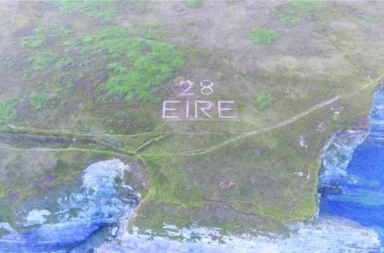How To Get Permanent Residency In Spain
Moving to another country takes a lot of organising and unfortunately, even once you’ve made the move, the list of things you need to do continues. You’ve got to sort out a bank account, get an NIE number, register with a doctor and get your children into school (if you have any), the list goes on. These are things that we know we have to do, but what about the things we are unsure of? One example is getting permanent residency in Spain or ‘Residencia’.
Many foreigners in Spain don’t bother applying for this, but the Spanish law says that if you have lived in Spain for more than three months (90 days) and plan on living in the country for more than 183 days per year, you have to apply for permanent Spanish residency.
Before 2007, foreigners living in Spain for more than six months had to apply for the foreign EU Residence Card (Residencia). However, this all changed with the new Royal Decree of 16th February 2007, which states that foreign residents from EU countries that have lived in Spain for more than 90 days must apply for the new Resident Certificate (Certificado de Residente). To get this, you have to be entered into the Central Register for Foreign Nationals or Registro Central de Extranjeros.
Residency Process In Spain After Brexit
The future rights of British citizens living in Spain has been on hold due to the Brexit referendum, however as the UK officially left the EU on 31 January 2020, the Spanish residency process has now become somewhat clearer.
There will now be a transition period which will begin on 1 February and end on 31 December 2020.
Once the transition period begins, those who were resident in Spain prior to 31 January 2020, will be able to replace their existing ID with a definitive residence document, which will be a foreigners identity card or ‘third-country’ ID card commonly referred to as a TIE (Tarjeta de Identificación de Extranjeros). These will replace the existing A4 green residency certificates, permits and cards.
However, it is important to note that if you already have a green residency certificate (A4 size or credit card size), it is not compulsory to change this to the new TIE card. Both documents will be valid and demonstrate to the Spanish authorities your residency status and rights under the Withdrawal Agreement.
If you arrive in Spain during the transition period, a TIE card will be issued to you directly, however, the British Embassy has said that if you do receive an older style green certificate/card this will still be a valid residency document. Which form you are issued with, may depend on where you are in the country and at what stage in the transition period you register. From July 6, 2020, all new residency documents will be in the form of the new TIE card.
The TIE will be a biometric card and will prove your eligibility to benefit from the rights included under the Withdrawal Agreement. The card will also mean your status will be that of a legally resident ‘third-country’ national.
Included on this new Resident Certificate/TIE is the date of registration, the holder’s name, address, nationality and NIE number – Nùmero de Identificaciòn de Extranjero (tax identification number for foreigners). This all certifies that you are resident in Spain.
Also with the previous EU Residence Card, foreigners NIE numbers had to be applied for separately. But not any longer, as with the new Resident Certificate/TIE, the NIE is now automatically included unless you have already been issued with one.
How to Apply for Permanent Residency in Spain 2020
So how do you apply for residency?
Thankfully the new system with the certificate is much simpler. All you need to do is take your NIE number (if you already have one), applicants passport (the original and one photocopy), your original census certificate (The empdronamiento certificate can be obtained from your local Ayuntamiento/Townhall), two passport size photos, application form EX18 and your application fee (€21.44) to the foreigner’s department (Oficina de Extranjeros) of your local police station.
If you do not have an NIE number, you will be issued with one when applying for residencia.
Before you go to the foreigner’s department, you will need to make an appointment online at https://sede.administracionespublicas.gob.es
Proof of Income for Spanish Residency
You may also need to complete form 790 which you will need to be signed by your bank. The form will detail your bank account details and the amount of money you currently have deposited with them.
Under new permanent residency requirements, you must also prove that you have a sufficient income level of above €800 per person per month in order to sustain your new life here. This could be in the form of an employment contract or pension (s1 form). You may need to provide your last 3 months bank statements as proof.
Do I need to be on the Padron?
Being registered on your Town Hall’s Padron (Empadronamiento) is not a strict requirement, however, it is advisable to present proof of this along with other documents when applying as you may be asked for it.
Once you have been resident for five years or more, you are eligible to apply for a certificate of permanent residence or Residente Permanente.


